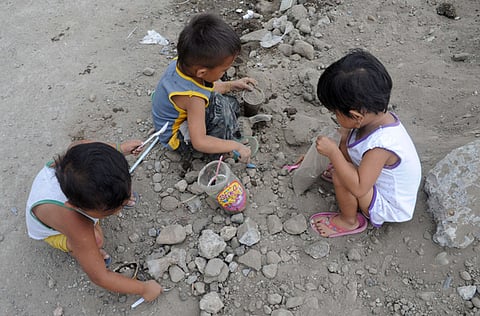Women of Philippine slum welcome birth control victory
Proponents said the law could now be implemented, barring any further appeals from the Church

Manila: Single mother Christina Bantasan clutched her baby in the shadows of a sprawling Philippine slum, wishing that a controversial birth control law had come earlier so she could have planned her future better.
Bantasan, 25, had a child out of wedlock in October, six months before the country’s highest court approved the reproductive health law on Tuesday despite pressure from the influential Catholic Church.
“It was the first time for the both of us. We had no idea about birth control. I didn’t know I could use pills. My parents were so angry when I got pregnant,” she said.
The unplanned pregnancy forced her to drop out of college, and forgo a dream of one day becoming a successful businesswoman.
“I probably would not have gotten pregnant and I would probably be close to graduating by now,” if the law had been passed earlier, she said, as she tended her mother’s flavoured ice treat stand near a Catholic church in Baseco, one of Manila’s biggest slums.
President Benigno Aquino signed the law into effect in December 2012, aiming to make birth control devices more available to the public, while mandating sex education classes for teenagers, among others.
But the Catholic Church, which counts over 80 per cent of the 100 million Filipinos as members, has spearheaded opposition to the law and asked the high court to nullify it.
It branded the law “evil,” and argued that it went against constitutional provisions on right to life, and sanctity of the family.
The Supreme Court however found the law “not unconstitutional” even as it struck down some provisions, including one that gave minors access to contraceptives without parental consent and penalising health officers who refuse to disseminate information on reproductive health programs.
Still, advocates hailed the decision a triumph, noting that the government would now be mandated to procure and distribute contraceptives for the public.
That could lead to a drop in the number of mothers dying due to complications in child birth, and an overall decline in fertility rates which are among the highest in the region, they said.
Proponents said the law could now be implemented, pending any further appeals from the Church.
However, some warned that implementation could be difficult as budgets for contraceptives still have to go through Congress, where the Church could once again lobby against it.
Nonetheless, the leader of the Catholic Bishops Conference of the Philippines, Archbishop Socrates Villegas has reacted to the court decision with a conciliatory tone, and called on his flock to respect the judicial process.
He urged members to “move on” from being a reactionary group and instead focus on its moral teachings within the church.
For Bantasan and many women living in slum squalor, the need for the law is painfully obvious.
“There are so many kids who are not aware of their situation and get pregnant. One of my friends was just 14 years old when she got pregnant. It was just her first time to have sex and the father abandoned her,” she recalled.
Many of the women in the seaside slum said they knew there was a need for wider spacing between births, but in many cases, were not aware how to do it.
Myrna Nucup, 51, wife of a construction worker and mother of three, said she had avoided using contraceptives thanks to a folk method of birth control passed on by her parents.
“Get up after having sex, go to the bathroom and wash it out,” she said. “After that, make sure you don’t go straight to sleep so your husband’s seed dries out”.
But as she watched television in her ramshackle home no bigger than a garage, Nucup agreed there was a need for the law to the implemented.
“If women had fewer children, they could afford to send them to school,” she said.
Caroline Nazario, 21 and already a mother of two, said she was aware she risked being reprimanded by the village priest, but got a contraceptive implant from a nongovernment organisation anyway.
“If I followed my faith, we would have children every year and we would get even poorer,” she said.
Sign up for the Daily Briefing
Get the latest news and updates straight to your inbox


